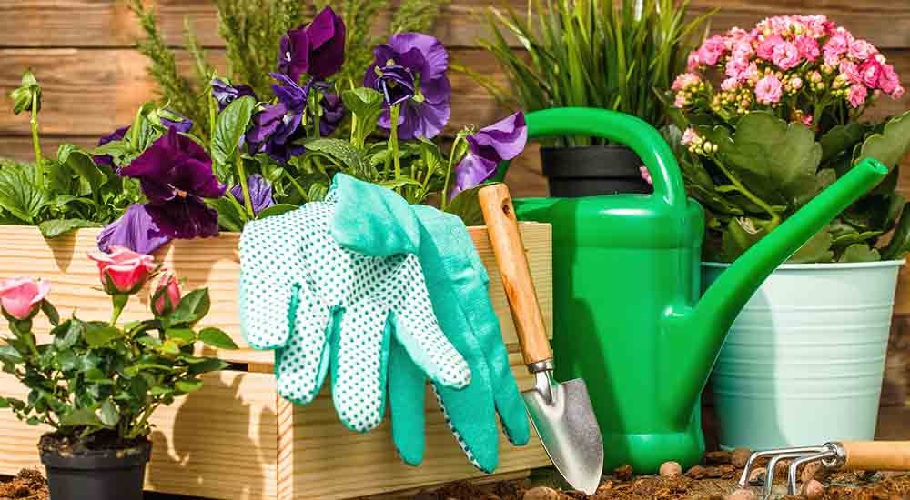Gardening is a rewarding and fulfilling hobby that allows you to connect with nature, beautify your outdoor space, and even grow your own food. To make your DIY garden tools projects a success, having the right tools is essential.
Here’s a comprehensive guide to the must-have garden tools for every DIY gardener.
Gloves
Gardening can be tough on your hands, so a good pair of gloves is a must. Look for gloves that are durable yet flexible, and make sure they fit well to protect your hands from thorns, splinters, and dirt.
Leather gloves are excellent for heavy-duty tasks, while cotton gloves are suitable for lighter work. Some gloves come with reinforced fingertips and padded palms for added protection and comfort.
Hand Trowel
A hand trowel is a versatile tool for planting, transplanting, and weeding. Choose one with a comfortable grip and a sturdy, rust-resistant blade.
This tool is perfect for working in small spaces and for detailed gardening tasks. Stainless steel trowels are durable and easy to clean, while aluminum trowels are lightweight and rust-resistant.
Pruning Shears
Pruning shears, also known as secateurs, are essential for trimming and shaping plants, shrubs, and small trees. They help keep your plants healthy by removing dead or diseased branches.
Look for high-quality, sharp blades that can make clean cuts. Bypass pruners are great for live plants and green wood, while anvil pruners work well on dead wood and tougher branches.
Garden Fork
A garden fork is great for turning soil, aerating, and breaking up compacted soil. It’s particularly useful in heavy or clay soil.
Choose a fork with strong, sharp tines that can penetrate tough soil easily. A digging fork is ideal for breaking up the ground, while a border fork, which is smaller and lighter, is perfect for more delicate tasks in confined spaces.
Spade
A spade is a must-have for digging holes, edging, lifting sod, and moving small mounds of dirt. Look for a spade with a strong handle and a sharp, durable blade.
A D-handle spade provides better leverage and control. Stainless steel spades are rust-resistant and easy to clean, while carbon steel spades are tough and can handle heavy-duty work.
Rake
A garden rake helps level soil, spread mulch, and gather leaves or debris. A metal rake with adjustable tines can handle various tasks, making it a versatile addition to your tool collection.
Leaf rakes, with their flexible tines, are perfect for gathering leaves without damaging your lawn, while garden rakes, with their rigid tines, are better for leveling soil and breaking up clumps.
Watering Can or Hose
Proper watering is crucial for plant health. A watering can is ideal for smaller gardens or delicate plants, while a hose with a spray nozzle attachment is better for larger areas.
Ensure your watering tools provide a gentle, even flow to avoid damaging your plants. Hoses with adjustable nozzles allow you to control the water pressure and pattern, while self-watering cans are great for slow, deep watering.
Wheelbarrow or Garden Cart
For transporting soil, compost, plants, or tools, a wheelbarrow or garden cart is indispensable. It saves you from multiple trips and reduces the physical strain of carrying heavy loads.
Look for a wheelbarrow with a sturdy frame and a large, balanced wheel for easy manoeuvre. Garden carts with multiple wheels are stable and can carry heavier loads over longer distances.
Hoe
A hoe is essential for weeding and cultivating soil. There are different types of hoes, such as the draw hoe, which is good for weeding and shaping soil, and the stirrup hoe, which is excellent for slicing through weeds just below the soil surface.
Dutch hoes, with their sharp, flat blades, are perfect for cutting weeds at the base, while collinear hoes, with their narrow blades, are ideal for precise weeding around plants.
Garden Kneeler
Gardening often involves a lot of kneeling, which can be tough on your knees. A garden kneeler or kneeling pad provides cushioning and support, making your gardening tasks more comfortable.
Some kneelers double as seats, offering a convenient place to rest during breaks. Look for kneelers with durable, water-resistant materials that are easy to clean.
Tips for Choosing Garden Tools
- Quality Over Quantity: Invest in high-quality tools that will last longer and perform better. Cheap tools may save money upfront but often need to be replaced sooner.
- Ergonomic Design: Look for tools with ergonomic handles to reduce strain and increase comfort. Tools with cushioned grips and non-slip surfaces can prevent hand fatigue and blisters.
- Proper Maintenance: Clean and sharpen your tools regularly to keep them in good working condition. Removing dirt and sap after each use and oiling metal parts can prevent rust and wear.
- Storage: Store your tools in a dry, organized space to prevent rust and damage. A tool shed or garage with hooks and shelves can keep your tools easily accessible and in good condition.
Additional Tools for Advanced Gardeners
- Soil Tester: Understanding your soil’s pH and nutrient levels can help you choose the right plants and fertilizers.
- Garden Knife: A versatile tool for cutting, digging, and weeding.
- Garden Hose Reel: Keeps your hose organized and extends its lifespan.
- Plant Supports: Stakes, cages, and trellises support growing plants and improve air circulation.
- Compost Bin: Turns kitchen scraps and garden waste into nutrient-rich compost.
Conclusion
Equipping yourself with these essential garden tools will make your DIY gardening projects more efficient and enjoyable. Whether you’re planting flowers, growing vegetables, or maintaining your landscape, having the right tools on hand is key to achieving a beautiful and productive garden. Remember, investing in quality tools and maintaining them properly will save you time and effort in the long run.



